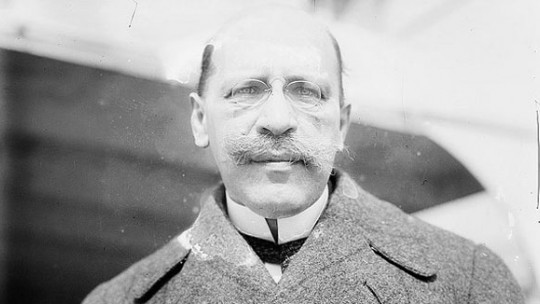Although today psychology is known primarily for its applications, the truth is that this science has not always been so interested in practice.
The emergence of what we know as “applied psychology” was key in the development of current psychology In this article we will analyze what applied psychology is and what its objectives and most important aspects are.
Applied psychology: definition and objectives
Applied psychology consists of the use of the knowledge obtained and the methods developed by basic psychology with the aim of solving everyday problems, increasing the quality of life or making groups of people function more appropriately.
Although applied psychology is a very broad discipline, We can say that this concept refers to the practical aspect of psychology Unlike applied psychology, psychological science in general is not necessarily concerned with intervention but rather studies behavior and mental processes.
Thus, while basic psychology includes disciplines such as social, experimental, evolutionary or developmental psychology, applied psychology puts into practice the knowledge obtained by the aforementioned branches, as occurs in the cases of clinical psychology, educational psychology. or that of human resources.
However, the distinction between applied psychology and other aspects of psychology is not always clear since theory and practice feed each other in a lively and constant way.
Münsterberg and the foundation of this discipline
The main pioneer of applied psychology is considered to be the German psychophysiologist Hugo Münsterberg After studying with Wilhelm Wundt and founding a psychological laboratory in Freiburg, Münsterberg met William James, who invited him to work at Harvard University. It was in the United States where he gained more recognition and fame.
Münsterberg’s works contributed to the development of many future fields of applied psychology among which are clinical, forensic and organizational psychology.
Münsterberg’s work would be a fundamental reference for the application of psychological knowledge during the following decades, particularly after the creation of the International Association of Applied Psychology and World War II, when the US government began hiring public psychologists to increase your chances of emerging victorious from the conflict.
Aspects of applied psychology
The concept “applied psychology” is very broad and therefore includes a large number of subdisciplines. We are going to focus on briefly describing the objectives of the most well-known and defining branches of applied psychology
1. Community psychology
Community psychologists primarily use the knowledge obtained from social psychology with the aim of improving the quality of life of large groups, such as residents of marginal neighborhoods. The greatest peculiarity of community psychology is that it focuses on macrosocial aspects starting from a territorial perspective.
2. Organizational and human resources
Organizational psychology focuses on preventing and solving problems that arise in the context of the company For its part, the concept “human resources” refers more specifically to the selection, training and management of personnel based on the organization’s objectives.
3. Educational
Educational psychology is the application of scientific psychology to learning, fundamentally what children and adolescents carry out during basic education. Educational psychology draws on theoretical branches such as developmental or cognitive psychology.
4. Clinic
Clinical psychology, probably the best-known branch of psychological science, deals with studying, preventing and treating dysfunctional behavior and improving mental well-being Within clinical psychology, behavior modification therapy is the theoretical orientation closest to the objective of applying knowledge obtained through scientific research.
5. Environmental
This discipline applies the knowledge of psychology to the relationship of people with their environment, understanding the term in a broad sense; Thus, environmental psychology would include both the arrangement of furniture to enhance work performance and the applications of psychology in nature conservation, among many other examples.
6. Health
The psychology of health analyzes the relationship between behavior and physical disorders, particularly chronic ones, such as cardiovascular problems or asthma. This branch of psychology partially overlaps with clinical psychology and focuses on both the prevention and treatment and management of diseases.
7. Of sport
Sports psychology works on the factors that affect sports performance in order to enhance it. Among others, sports psychology deals with the management of group conflicts in team sports and the reduction of anxiety in high-performance competitions.
8. Forensic
Forensic psychology focuses on applying scientific psychology to legal proceedings. In addition to contributing to the investigation of crimes, forensic psychology can be used to resolve child custody conflicts or analyze the validity of witness testimony, among other uses.
9. Advertising
The application of psychological knowledge to advertising is one of the oldest forms of applied psychology given its economic potential for private companies. The well-known subliminal images, for example, emerged in the context of psychology applied to advertising.









